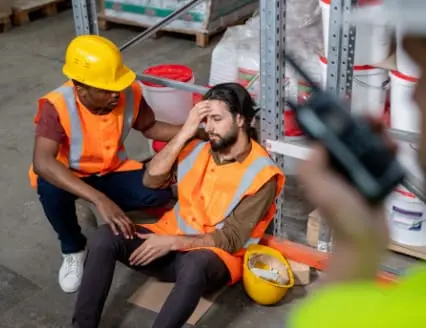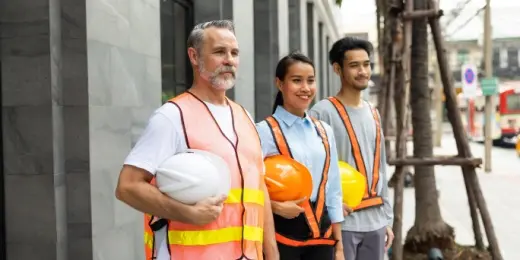What is Incident Investigation?
Incident investigation analyzes and identifies the circumstances surrounding an undesirable event, such as an accident or a near miss. It aims to determine the causes and contributing factors that led to the event’s occurrence. The goal is not to find someone to blame but rather to identify opportunities for improvement to prevent similar incidents from happening in the future.
A well-executed incident investigation can help organizations improve safety, reduce risk, and save lives. It allows them to learn from mistakes and take steps toward preventing similar events from happening again.
Who Should Do the Investigating?
Typically, an incident investigation should be led by someone knowledgeable and experienced in investigating incidents. The investigation’s individual or team should also have access to all relevant information, including witnesses, documents, and physical evidence. The people doing the investigation should have the following:
- An understanding of incident causation models
- An understanding of investigative techniques
- A thorough understanding of any legal or organizational requirements
- Expertise in occupational health and safety
- Working knowledge of the particular work processes, procedures, individuals, and industrial relations environment
- Ability to use interviews and other person-to-person techniques (such as mediation or conflict resolution) effectively
- Knowledgeable about document, record, and data collection requirements
- Ability to analyze and recommend conclusions based on data collected
Certain places have rules about conducting investigations together, with both management and workers present and knowledgeable investigators. Team members may include:
- Employees with experience in the field
- Area or work supervisor
- Safety officer
- Committee on health and safety
- Representative of the union, if applicable
- Employees who have experience conducting investigations
- “External” experts
- Local government or police representative
Incidents Requiring an Investigation
Incidents that require an investigation as part of incident management can include but are not limited to:
- Death or severe injury to a worker
- An injury that requires medical attention
- An injury that was minor or could have been painful but didn’t occur
- Collapse or significant structural failure
- Release of hazardous substances in large quantities
- Occupational Safety and Health Administration (OHSA) Regulations for diving incidents
- Explosive incidents posing as a danger
- Injuries caused by blasting
How SafetyCulture Can Streamline and Improve Your Incident Investigation
Eliminate manual tasks and streamline your operations.
Get started for FREEInvestigation Stages
The investigation process for a workplace incident includes four stages:
-
Preliminary Investigation
Preliminary investigations allow employers to identify hazardous conditions, procedures, or actions before proceeding safely with a complete investigation. As part of the protocol, employers must conduct a preliminary inquiry and submit an accompanying incident report within 48 hours of an incident.
-
Interim Corrective Actions
The employer must take necessary actions to prevent the incident from recurring while the investigation is ongoing. If only some hazardous conditions, actions, or procedures are recognized as significant factors in the incident, temporary measures may include:
- Shutting down all or certain portions of the worksite
- Eliminating equipment
- Transferring employees to different responsibilities
-
Full Investigation
A complete investigation entails identifying the root cause or reasons behind an incident. The process consists of thoroughly examining the facts and circumstances to identify the root causes that contributed to the incident. Necessary inquiries are:
- What factors contributed to unsafe conditions, actions, or procedures?
- Do my processes or management system comply with health and safety regulations?
It is necessary to complete the investigation and report within 30 days of the incident.
-
Final Corrective Actions
Upon completion of a thorough investigation, as an employer, it is necessary to create a report outlining the unsafe conditions that were the cause of the incident and detailing the required corrective actions. Your organization must also establish steps to implement those actions.
How are the Facts Collected?
There are several methods for conducting workplace incident investigations, including.
-
Physical Evidence
Identifying witnesses is recommended before gathering information on the site, preserving evidence, and preserving evidence. Before disturbing an incident site, you must obtain permission from an authorized government official, such as a coroner, inspector, or police officer.
Physical evidence is often considered less controversial than other forms of data, but it is vulnerable to rapid changes or destruction, requiring immediate documentation.
-
Witness Accounts
In certain circumstances, witnesses can be your primary source of information when investigating an incident where you don’t have immediate access to the scene. Interviewing witnesses can be challenging for investigators due to emotional stress and concerns over potential repercussions.
It is advisable to separate witnesses and conduct interviews promptly following the event. When witnesses discuss an event together, individual perceptions may be compromised as they try to reach a consensus despite doubts about the facts.
-
Interviewing
The objective of the interview is to establish comprehension with the witness and acquire their account of the event. The following are guidelines to follow and avoid when conducting an interview.
Do’s:
- Put the witness at ease, who’s probably upset.
- Explain why the investigation is needed, what happened, and what caused it.
- Listen to what the witness has to say.
- Verify that the statement is accurate.
- Observe the witness’s feelings and try to sense them.
- Make quick notes or ask someone on the team to do so during the interview.
- Ask if recording the interview is okay before you begin.
- Bring the discussion to a positive conclusion.
Don’ts
- Make the witness feel intimidated.
- Interrupt the witness’ testimony.
- Pose leading questions.
- Demonstrate your own emotions.
- Conclude prematurely.
-
Other Information
The following documents may contain vital information for the investigation:
- Technical data sheets
- Health and safety committee minutes
- Inspection reports
- Company policies
- Maintenance reports
- Past incident reports
- Safe-work procedures
- Training reports
It is crucial to thoroughly analyze these documents to fully understand the incident and prevent similar accidents from occurring in the future.
6 Steps of an Incident Investigation Process
Effective workplace incident investigation consists of six steps.
-
Secure the Scene
Utilizing cones or other barriers to shield vulnerable areas is essential to begin the investigation and preserve tangible evidence. If the distance to the scene requires a long trip, onsite management should handle this task. The investigation team must adhere to safety guidelines mandated by the site and may need to wear Personal Protective Equipment (PPE) as required.
-
Plan the Investigation
After securing the scene and gathering initial information and evidence, the next step is to develop an investigation plan. Having a systematic investigation plan can ensure it is comprehensive. During this phase, the investigation team must determine the individuals involved and assess the timeframe and resource requirements.
Gathering all necessary documents and equipment in a kit is recommended for optimal efficiency and coordination during an investigation. The kit should include the following items regardless of the situation:
- Markers and cones for barricades
- Padlocks or warning tags for susceptible areas
- PPE
- Measuring tape
- Interview forms
- Incident report forms
- Sample containers
-
Collect All Relevant Information
The subsequent action involves gathering all pertinent details about the occurrence. Information regarding the incident is obtainable from multiple sources, including individuals present at the scene, witnesses who require interviewing, equipment located onsite, and documents like training histories, inspection reports, and logs of maintenance.
-
Analyze Collected Data to Find the Root Cause
Analyzing the events that lead to an incident is essential in identifying the root cause since a series of events usually trigger it. Performing a root cause analysis can reveal underlying or systemic issues instead of only investigating surface causes such as human error.
-
Implement Corrective Actions
Develop a comprehensive plan to address the incident’s immediate and underlying causes, delegate individuals to carry out the necessary actions, and verify that the plan is executed. It is essential to monitor the progress of the corrective action plan to ensure proper implementation of the measures.
-
Document and Share the Results
Different documents must be shared, including incident investigation reports, fact sheets, alerts, and presentations. Carefully documenting every incident will create a complete database of risks and incidents that can help manage future incidents efficiently.
Make sure to check the report’s accuracy before sharing it with management and workers. Involve parties such as supervisors on duty during the incident, witnesses, workers, and safety officers to sign off on the report. Finally, share key findings with all involved parties.




